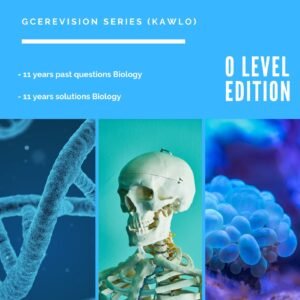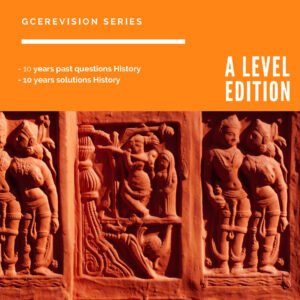To DOWNLOAD CAMEROON GCE JUNE 2008 Biology
Paper 2 click on the link below
June 2008
1. (a) Give an account of the chemical nature and variety of carbohydrates.
(b) Outline the role of carbohydrates in the life of a plant.
(c) With the aid of simple illustrations, describe the primary, secondary and tertiary structures of proteins.
2. (a) What is translocation?
(b) How are organic substances transported in plants?
(c) How may radioactive tracers be used to demonstrate translocation in the phloem? (3, 12,5mks)
3. (a) What are the major features of each of the major phases of mitosis?
(b) Name one tissue in the human body and one in the flowering plant where you could expect to find cells
dividing by mitosis
(c) Outline the major differences between meiosis and mitosis.
4. (a) Explain the importance of symbiotic bacteria in: (i) leguminous plants
(ii) the alimentary canal of ruminants
(b) Describe how the teeth of a herbivore are adapted to its diet.
5. (a) Draw a large labelled diagram of a single striated muscle fibre as seen under an electron microscope.
(b) Write short notes on the biological significance of the following with respect to locomotion in animals.
(i) Cartilage (ii) Joints (iii) Tendons and ligaments (5,15 mks)
6. (a) What is homeostasis?
(b) Describe the homeostatic regulation of salt and water balance in a named
(i) Mammal (ii) fresh water fish (iii) terrestrial insect
(c) What factors determine the efficiency of a homeostatic control system?
7. (a) Define an ecosystem.
(b) List the components of an ecosystem you have studied.
(c) Trace the possible interrelationships that may exist between the organisms.
(d) Why is it not advisable to kill living things indiscriminately?
8. (a) A male butterfly homozygous for brown coloured body and normal antennae was crossed with a female homozygous for black-body and forked antennae. All the offspring obtained possessed brown bodies
and normal antennae. When the F1 males were mated with females having the female parent’s genetic
make-up, they produced the following offspring:
230 flies with brown bodies and normaTantennae
20 flies with brown bodies and forked antennae
18 flies with black bodies and normal antennae
236 flies with black bodies and forked antennae
(b) Using suitable symbols, explain these crosses giving the genotypes, phenotypes and proportions of these in the parents and offspring.
What is the crossover value for the two characteristics involved? (16, 4mks)
















Lilian jane
June 29, 2017
Thanks for the gce questions u pasted online
Lilian jane
June 29, 2017
Plz paste more on my behalf i realy need them.THANKZ